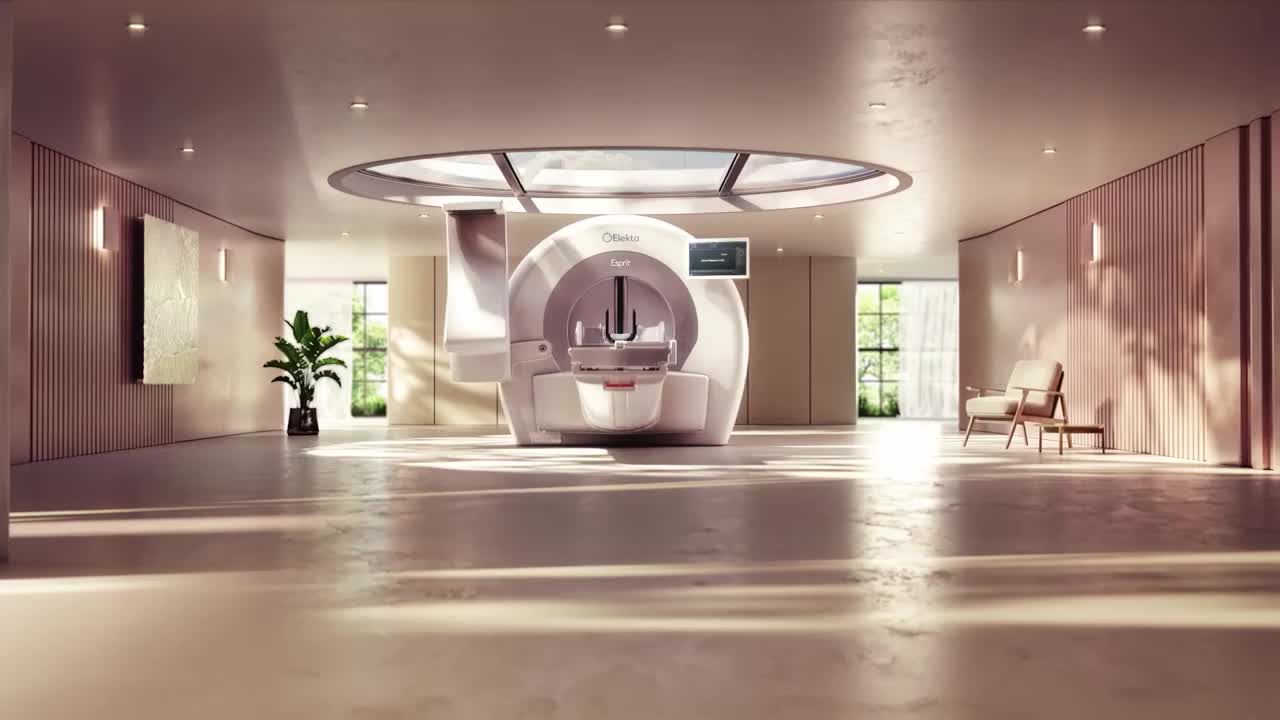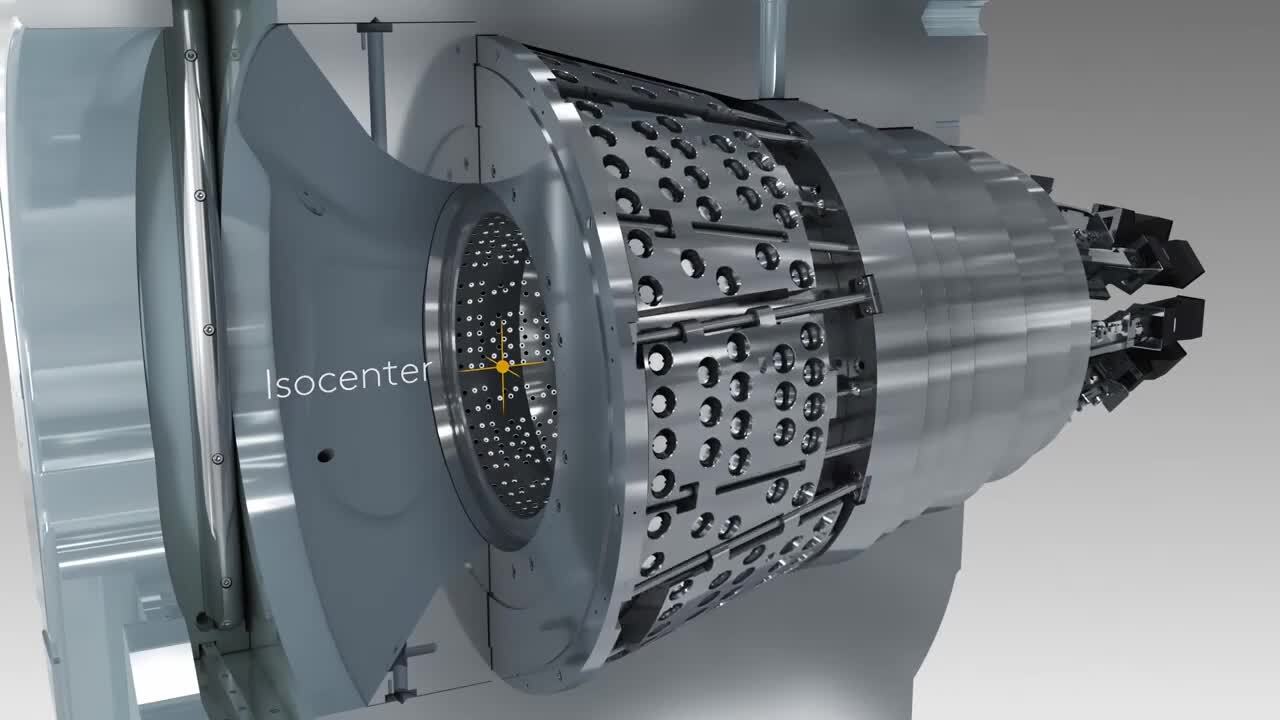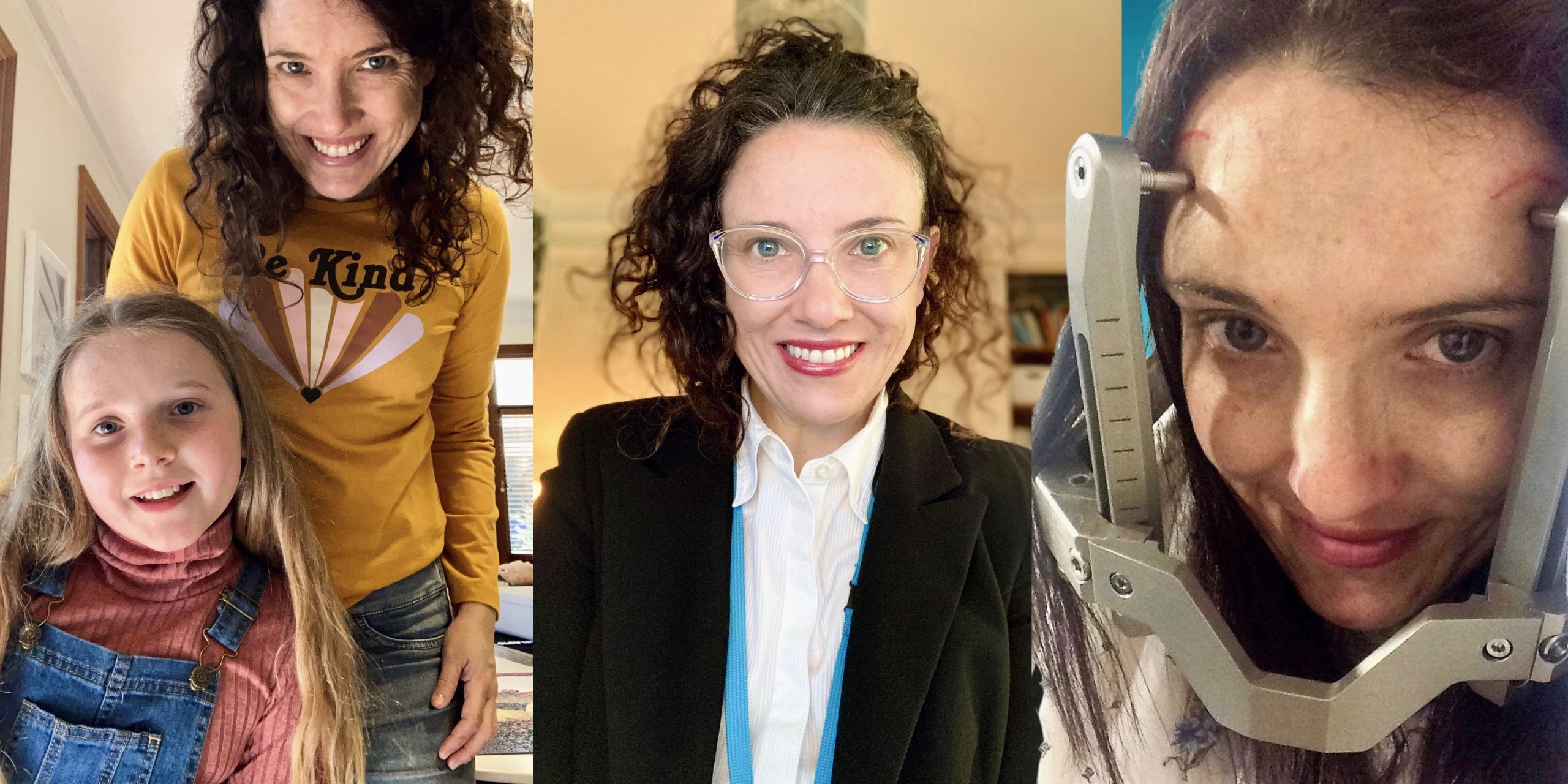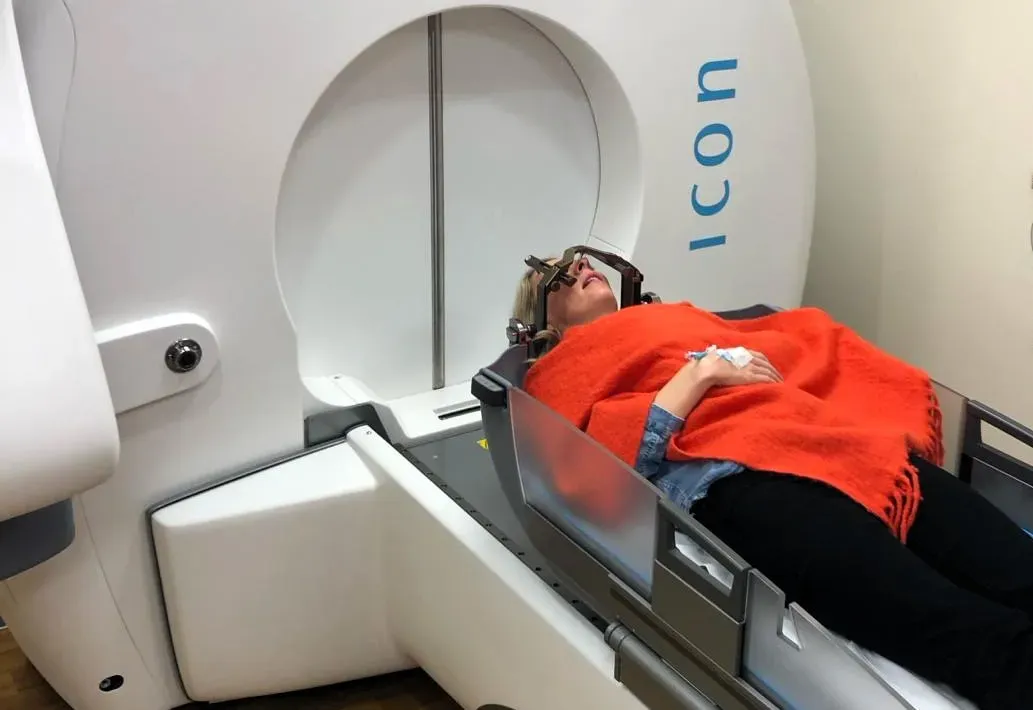Gamma Knife is typically completed in a single day with you arriving in the morning and able to return home later in the day. Physicians may also choose to deliver the treatment over a few days.
Share your story
Gamma Knife® radiosurgery enables physicians to treat small areas within the brain without using surgery at all. Treatment is non-invasive, which means instead of opening the skull to remove a lesion or tumor, it uses precise gamma radiation beams that can treat the tumor or lesion from outside the body.
Brain surgery without a single cut
It’s called Gamma Knife, despite not being a knife at all, because it’s so accurate using 192 tiny beams of gamma radiation focused on the exact area of the tumor or lesion. These beams meet at a single spot with the accuracy of less than one-tenth of a millimetre (about the thickness of a sheet of paper). They administer a dose of radiation while minimising radiation exposure to healthy tissue. The non-invasive nature of this treatment may lead to a shorter recovery time than traditional brain surgery and fewer side-effects than conventional radiotherapy.
This level of accuracy means gamma knife can target the smallest and most challenging brain tumors or lesions with extreme precision, while safeguarding healthy tissue and organs. Gamma Knife radiosurgery is also referred to as stereotactic radiosurgery and can be used as an alternative to whole brain radiation therapy as a treatment for multiple brain metastases.
What to expect

What conditions are treated with Gamma Knife?
Leksell Gamma Knife is clinically proven to treat a range of indications in the brain ranging from very small lesions or tumor sizes of a millimeter to several centimeters without the need for open brain surgery. It can be used to treat cancerous and non-cancerous tumors as well as an array of neurological disorders.
Patients with the following conditions may be offered Gamma Knife radiosurgery as a treatment option:
- Tumors
- Brain Metastases
- Acoustic Neuroma/Vestibular Schwannoma
- Meningioma
- Glioblastoma
- Pituitary Adenoma
- Vascular
- Arteriovenous Malformation (AVM)
- Disorders
- Essential Tremor
- Trigeminal Neuralgia
Contact your health professional to find out if Gamma Knife radiosurgery could be the right treatment option for you.
What are the Gamma Knife treatment steps?
A step-by-step guide to understanding Gamma Knife treatment. Depending on the clinical situation, the steps of the procedure may vary.
1. Consultation
Before your radiosurgery begins, your doctor will discuss the treatment options with you, explain any side effects that you might experience, and answer any questions you might have. It’s a good idea to write your questions down before you go and to take notes during your visit.
2. Ensuring your head is kept still
To help achieve pinpoint accuracy during treatment delivery, it’s important that your head is kept still. A custom face mask or a special head frame will help to ensure this.
If you are treated using a mask, this will be custom made for you at the clinic prior to your actual treatment. The mask is made of lightweight material with little holes, and it becomes flexible when heated. While flexible, it’s placed over your face and molded to your facial contours. Once fully set, it will hold your head securely in position during your Gamma Knife treatment.
If you are to be treated using the head frame, your care team may apply local anaesthesia before fitting the frame on your head. If required, medication may also be prescribed to ensure you feel relaxed and comfortable. You will wear the frame throughout your treatment session to ensure pinpoint accuracy for the Gamma Knife radiosurgery.
3. Planning imaging
Prior to treatment you will have a scan or scans to create special images of the inside of your brain which help make the most effective treatment plan possible. The images might be obtained using a CT scanner (computed tomography), an MRI scanner (magnetic resonance imaging) or angiography images.
These images will show the location, size and shape of the treatment target so that your treatment team can treat the area as precisely as possible.
4. Treatment planning
Once your images are captured, your physician works with a specialized medical physicist to calculate exactly how the Gamma Knife treatment should be performed – the number of beams required and where they must meet to deliver the most effective treatment while protecting surrounding tissue and structures.
5. Treatment
When it is time for your treatment, you will be helped onto the treatment couch by the care team, and they will fix your custom-made mask or head frame to the couch. A marker may be placed on the tip of your nose. A camera uses this to monitor any movement during treatment. An image may be taken to check your position and to adapt the treatment plan, if necessary.
The treatment may last from a few minutes to more than an hour, depending on the size, shape, and complexity of the area being treated. You will not feel anything from the treatment—in fact, some patients even fall asleep. You can communicate with your treatment team at any time by intercom or hand signal and use the built-in sound system for your own music or podcasts.
6. After treatment and follow-up
Normal activities can usually be resumed in a day or so. Treatments are designed to stop the growth of tumors or dysfunctional tissue, which means that the effects are observed over a period of weeks or months. Your physician will stay in contact to assess your progress, which may include follow-up visits and imaging.
Download the treatment steps in:
When would Gamma Knife treatment be appropriate?
Gamma Knife stereotactic radiosurgery may be suggested if a tumor or lesion is located near a critical area in the brain. This could be an area responsible for important functions, such as speech or movement.
When tumors or lesions are deep inside the brain, it may also present a safer option than open brain surgery because reaching the area could be very risky depending on where the blood vessels or other critical areas are located. It may also present a safe solution for patients who are too unwell for brain surgery or those who have other conditions that may mean surgery is not right for them.
Gamma Knife radiosurgery is also an effective treatment option for multiple brain metastases - the low dose to healthy tissue means that treatment can be repeated if required. This means that for many patients they can avoid the option of whole brain radiotherapy.
What does it look like?
How does the gamma knife treatment work?
A Gamma Knife procedure treats brain lesions with enough gamma radiation to control them, so that they disappear, shrink or stop growing. It can be used to treat targets even in the most critical, difficult-to-access areas of the brain without delivering significant radiation doses to healthy normal brain tissue.

Dedicated to the brain
Leksell Gamma Knife is specifically designed for precise treatments in the brain, being able to treat very complex and challenging lesions or tumors.
Same-day treatment
Treatment is often a single outpatient session and treatment time ranges from minutes to an hour or more, with little to no side effects. The same procedure may happen over several days. Patients can usually resume normal activities shortly after the treatment.
How is Gamma Knife radiosurgery different to other radiosurgery devices?
Frequently asked questions
How many sessions is Gamma Knife radiosurgery?
Do I feel anything during the Gamma Knife treatment?
You will not feel anything at all from the treatment itself If your treatment requires a head frame, there might be mild pain from administration of any local anaesthetic used during placement of the head frame (like the sensation of having blood drawn). Patients have reported that they feel a pressure sensation when the frame is applied, and some discomfort.
What can I expect after Gamma Knife treatment?
After the treatment session is finished, the head frame or face mask is removed. If the treatment was performed with a frame there is sometimes a little bleeding from where the pins contact the head, this can be managed with plasters.
It is usually recommended that the patient refrain from physical activity over the next 18 to 24 hours, but after that you can resume daily activities.
How quickly will the Gamma Knife treatment work?
The effects of Gamma Knife radiosurgery occur over a period of time that can range from several weeks to several years, depending on the condition being treated.
Can Gamma Knife treatment be given more than once?
Yes, Gamma Knife is especially suited for repeated treatments due the minimal dose to normal tissue.
Does Gamma Knife only treat the brain?
Doctors are treating nearly 60 different indications on the Gamma Knife, these may not be mentioned on this page, please speak to your health provider for more information on your treatment.
Hear from others
Watch videos from patients and health care professionals to learn about their experience with Gamma Knife.

Dr. Theodor Vesagas, Clinical Director, Philippine Gamma Knife Center
Dr. Theodor Vesagas, a neurosurgeon at Philippine Gamma Knife Center, discusses non-invasive treatment for multiple brain metastases and meningioma using Leksell Gamma Knife.
Patient stories
Read about patient's experiences of treatment with Gamma Knife and their lives before and after diagnosis and treatment.

Jane
Six years on from Gamma Knife treatment, Jane says her quality of life is as good as before her diagnosis.
Want to share your story with someone going through the same thing?
These types of personal accounts can be educational, inspirational or simply comforting for others
Share on social
Please share the knowledge through social media.
Where can I go for updates and more information?
Please contact your healthcare provider with any questions/concerns.
Find a treatment center1. Ma L, Nichol A, Hossain S, et al. Int J CARS. Published online: 20 April 2014. doi:10.1007/s11548-014-1001-4.
2. Di Betta E, et al. Med Phys. 2010;37(7).
3. Mitrasinovic S, et al. Milestones in stereotactic radiosurgery for the central nervous system. J Clin Neurosci. 2019 Jan;59:12–19.



